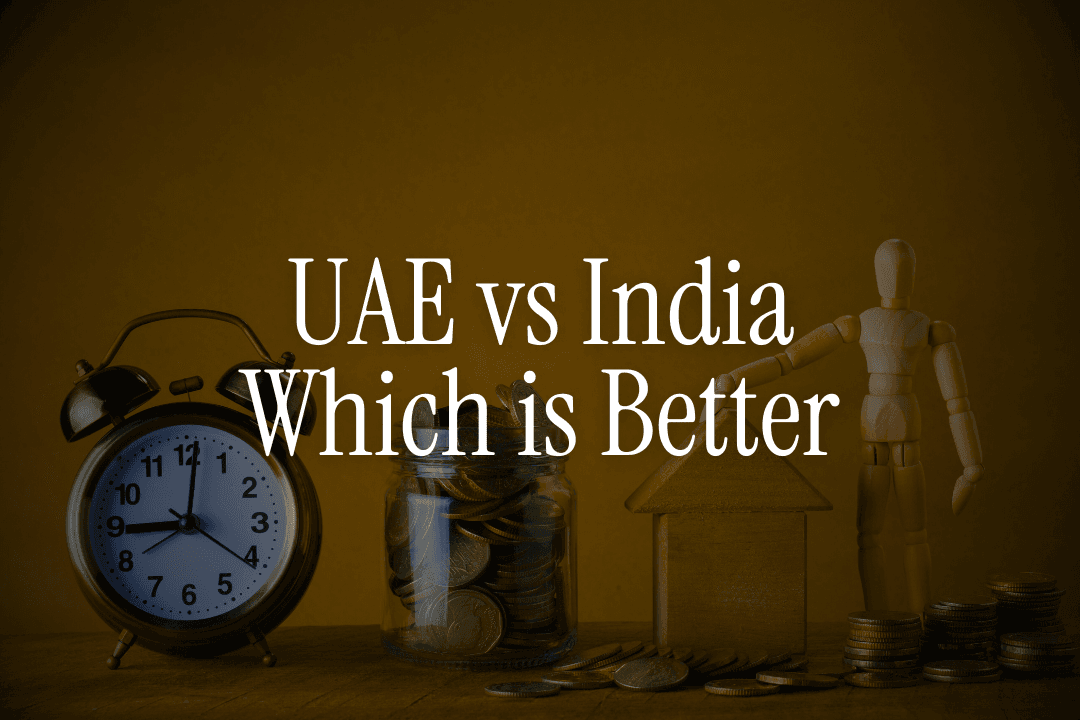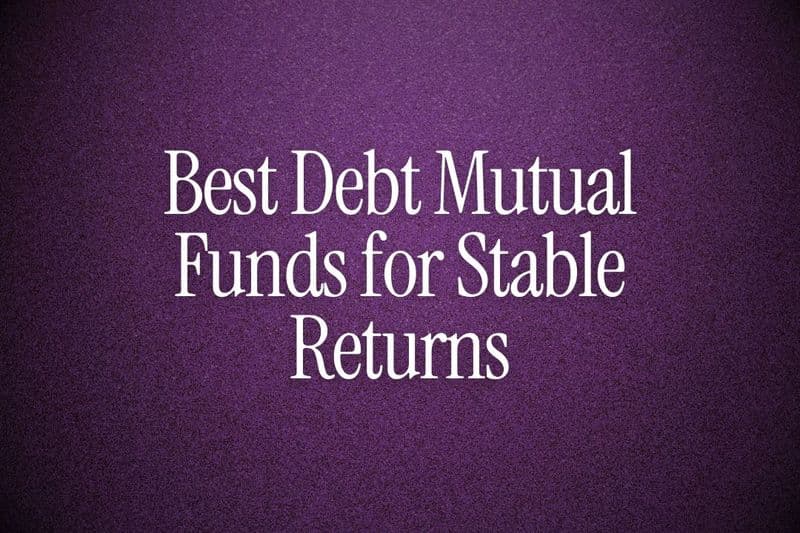
"Should I invest in UAE where I earn my money, or India where my heart is?"
If you're an NRI living in the UAE, this question has probably kept you awake at night. Your WhatsApp groups are filled with conflicting advice, financial forums offer contradictory opinions, and every investment advisor seems to have a different take.
Here's the myth most people believe: You should put all your money where you live OR where you're originally from.
The surprising truth? The best NRI investment strategy in 2025 isn't choosing sides-it's understanding how to use both markets strategically.
The Common Myths
Let's address the biggest misconceptions that are costing NRIs serious money:
Myth 1: "Invest where you live-it's safer and easier"
Myth 2: "India is always better for Indians-you understand the market"
Myth 3: "UAE investments are only for the ultra-wealthy"
Myth 4: "Currency fluctuations don't matter if you're a long-term investor"
What the Rules Actually Say
Here's what current regulations and market data reveal about UAE vs India investments for NRIs in 2025.
The Currency Reality Check
UAE Dirham Performance: The dirham has appreciated 4.69% against the Indian rupee in 2025, with 1 AED now worth ₹23.60 (compared to ₹22.50 in early 2024). Financial forecasts suggest the rupee may remain one of Asia's worst-performing currencies through H2 2025.
What this means: An NRI who sent 10,000 AED in early 2024 would have received ₹2,25,000. Today, they'd get ₹2,36,000-an extra ₹11,000 just from currency movement.
Market Performance: The Numbers Don't Lie
India's Growth Story:
- GDP growth: 8.2% in FY23-24 (fastest-growing major economy globally)
- Stock market returns: 12-15% CAGR over 10 years
- Real estate: Mumbai and Delhi saw up to 30% price jumps in 2024
- NRI participation in real estate: Jumped from 10% in 2019-20 to 15% in 2023, projected to reach 20% by 2025
UAE's Stability Play:
- Real estate yields: 5-11% annually with tax-free rental income
- Stock market performance: DFM had fifth-best global index performance in 2023
- Market growth projection: 19.33% annually by 2025
- Property price growth: 15% since 2021
How NRI Investments Really Work
India Investment Landscape
Strengths:
- Higher Growth Potential: India's 8.2% GDP growth creates exceptional investment opportunities
- Tax Benefits for UAE NRIs: Under India-UAE DTAA, UAE residents are exempt from capital gains tax on Indian mutual funds
- Emotional Connection: Investing in companies and sectors you understand culturally
- Diverse Options: From equity to real estate to GIFT City investments
Challenges:
- Currency Risk: When rupee weakens, your USD/AED returns diminish
- Compliance Complexity: Multiple account types, documentation requirements
- Distance Management: Property maintenance, document renewals from abroad
- Tax Confusion: Understanding NRI taxation across different investment types
UAE Investment Landscape
Strengths:
- Tax Efficiency: No personal income tax, no capital gains tax, no property tax
- Currency Stability: AED pegged to USD provides currency protection for global goals
- Residency Benefits: Golden Visa options starting from AED 750,000 property investment
- Proximity: Easy to monitor and manage investments
- Cash Flow Positive: Real estate generates immediate rental income (6-9% yields)
Challenges:
- Limited Emotional Connection: Investing in unfamiliar companies/sectors
- Smaller Market: Less diverse investment options compared to India
- Exit Strategy: What happens when you eventually return to India?
Benefits for NRIs: The Strategic Approach
Why Smart NRIs Use Both Markets
1. Currency Hedging
Diversifying across AED/USD and INR protects against currency volatility. When the rupee weakens (as it has in 2025), your UAE investments gain value in INR terms.
2. Tax Optimization
UAE-India DTAA allows strategic tax planning:
- UAE investments: Tax-free locally, minimal reporting in India
- Indian investments: Capital gains exemptions for UAE tax residents
- GIFT City products: Bridge both worlds with USD investments taxed favorably
3. Life Stage Alignment
- Accumulation Phase (30s-40s): Focus on UAE for steady cash flow and stability
- Growth Phase (40s-50s): Increase India allocation for higher returns
- Pre-Return Phase (50s+): Gradually shift to India-focused portfolio
Practical Portfolio Allocation by Goals
For Wealth Preservation (Conservative Profile):
- 50% UAE real estate and bonds
- 30% GIFT City USD deposits
- 20% Indian debt instruments
For Growth (Aggressive Profile):
- 40% Indian equity and mutual funds
- 30% UAE stocks and global investments
- 20% GIFT City products
- 10% Alternative investments (gold, REITs)
For Pre-Retirement (Balanced Profile):
- 35% Indian real estate and equity
- 35% UAE fixed income and REITs
- 30% USD-denominated investments
Risks and Limitations
India-Specific Risks
- Regulatory Changes: FEMA rules can change investment limits
- Property Hassles: 52% of NRIs cite property management as a major challenge
- Currency Volatility: Rupee expected to remain weak through 2025
- Distance Factors: Difficult to respond quickly to market changes
UAE-Specific Risks
- Economic Concentration: Heavy dependence on oil and real estate
- Visa Dependency: Investment benefits tied to residency status
- Limited Heritage: Newer market with less historical performance data
- Exit Complexity: Repatriating investments when leaving UAE
Common Risks for Both
- Over-Concentration: Putting too much in one market/asset class
- Currency Timing: Trying to time exchange rates
- Tax Compliance: Missing DTAA benefits due to documentation gaps
Step-by-Step Investment Process
Phase 1: Foundation Setting (Months 1-3)
Financial Infrastructure:
- Open NRE/NRO accounts for India investments
- Set up UAE bank accounts and trading platforms
- Obtain UAE tax residency certificate
- Complete KYC documentation for both markets
Goal Clarity:
- Emergency fund: 6 months expenses in local currency (AED)
- Short-term goals (1-3 years): UAE-focused for liquidity
- Long-term goals (5+ years): India-focused for growth
- Retirement planning: Balanced across both markets
Phase 2: Core Allocation (Months 4-12)
Start with Safer Options:
- 40% GIFT City USD fixed deposits (currency protection + tax benefits)
- 30% UAE real estate or REITs (immediate cash flow)
- 20% Indian blue-chip equity (growth potential)
- 10% Liquid funds and emergency reserves
Phase 3: Optimization (Year 2+)
Advanced Strategies:
- Currency Hedging: Time remittances when AED is strong against INR
- Tax Harvesting: Use DTAA benefits to minimize overall tax burden
- Rebalancing: Adjust allocations based on life changes and market performance
- Estate Planning: Structure investments for seamless transfer
Documentation Checklist
For India Investments:
- Valid NRI status proof
- PAN card and Aadhaar card
- NRE/NRO account statements
- Income tax returns for last 2 years
For UAE Investments:
- Emirates ID and residence visa
- UAE bank account with minimum balance
- Salary certificate and NOC from employer
- UAE tax residency certificate
For DTAA Benefits:
- Tax residency certificate from UAE
- Form 10F for claiming treaty benefits
- Documentation of UAE tax payment (if any)
What This Means for You
The bottom line: The UAE vs India investment debate misses the point. The real opportunity lies in strategically using both markets.
Your action plan for 2025:
- Start with Currency Protection: Begin with GIFT City USD investments to hedge against rupee volatility
- Build Local Stability: Invest in UAE real estate or stocks for immediate cash flow and residency benefits
- Capture India Growth: Gradually increase Indian equity allocation for long-term wealth building
- Optimize Taxes: Use DTAA benefits to minimize tax burden across both markets
Remember: The best investment strategy isn't about choosing sides-it's about optimizing your global portfolio for maximum returns while minimizing risks.
Ready to build a smart cross-border investment portfolio?
Download the Belong app to explore tax-free USD investment options that bridge UAE earnings with India's growth potential. Or join our WhatsApp community to connect with fellow NRIs who've successfully diversified across both markets.
The future belongs to NRIs who think globally while acting strategically. Make sure you're one of them.
Sources:
- NRI Property Guide 2025: UAE vs India - Gulf News
- UAE Dirham vs Indian Rupee Performance 2025 - UAE Stories
- Best NRI Investment Options in India 2025 - WiseNRI
- India vs US Investment Comparison for NRIs - Arthgyaan
- Top NRI Investment Options in India 2025 - LendenClub
- AED to INR Forecast 2025-2030 - CAPEX
- Indian Rupee Weakness Boosts NRI Remittances - Gulf News




